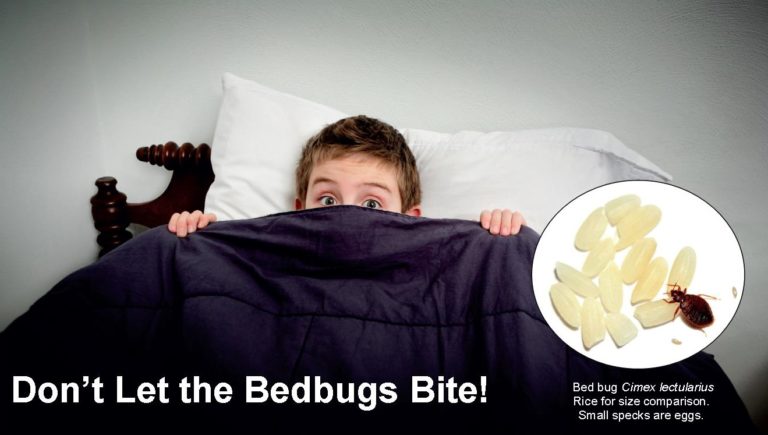“The fact is, any home can have bedbugs.”
The thought of bedbugs sucking your blood while you sleep is enough to make your skin crawl. But if you think that this is only something that happens to families with poor housekeeping habits, think again. Bedbugs can infest any home, including yours. The only requirement for bedbugs to infest a home is that warm-blooded (preferably human) hosts live there.
Bedbugs have made a strong comeback in the United States, where they have been almost unheard of since the 1940’s. Back then, products like DDT (now banned) almost completely eradicated these blood-sucking pests. Due to reduced use of pesticides indoors and increased travel to other countries, bedbugs are finding that living here in the good old USA is easier than ever.
Bedbugs are slow walkers and, being wingless, they are unable to fly. So how do they get into homes? They hitchhike. Usually arriving in or on luggage when you return from a trip.
Hotels and motels are ground-zero for the recent outbreak of bed bugs. Unsuspecting travelers pick them up inadvertently from infested hotel rooms. Since they are so small, around a quarter inch long and very flat, they are extremely difficult to see.
Once they get into your home, bedbugs have clever ways of escaping detection. They rarely come out into the light, hiding in nooks and crannies in or near the places that humans sleep, such as beds. Unlike lice, fleas and ticks, bedbugs quickly leave the host after feeding and return to their hiding place to digest their meal.
Mattresses and box springs are favorite hiding places since they are closest to the food source. However, as the bedbug population increases, the infestation spreads outward onto adjacent furnishings and carpets. They hide until a meal arrives and only then do they come out to feed.
Adult bedbugs can survive for over a month without feeding, so leaving the room unoccupied for a period of time is not a reliable way to get rid of them.
There is some good news about bedbugs. Unlike mosquitoes, fleas and ticks, bedbugs are not known to be a source of disease in humans. The most troubling thing about them is the itchy, red, raised welts they leave behind. Because they look like a bad mosquito bite, bedbug bites often go undetected.
Of course, a bedbug infestation may cause some embarrassment because of the misconceptions about where they come from. But it is important to remember that cleanliness has nothing to do with it. Still, you obviously want to avoid bringing them into your home.
The most proactive thing to do is check periodically. Bedbugs leave clues that belie their presence. When you change the sheets, take a careful look at the mattress for telltale signs such as brownish discolorations or black fecal pellets (digested blood) and their shed skins. Eggs are extremely small and very difficult to see. Look carefully at the seams of mattresses and even behind headboards. Check between mattress and box springs as well as on the bottom of box springs and on nearby wood furniture.
What should you do if you suspect that your home may have bedbugs? Call a professional pest control company. They can do a thorough inspection and come up with a control plan to eliminate the infestation.
Then, call Bluegreen to thoroughly clean your carpets, draperies and upholstery to remove residual contaminants left by the bedbugs. In extreme cases, it may be necessary to replace a mattress and box spring, but usually they can be treated and cleaned. Remember, there is no need for embarrassment; bedbugs can happen to anyone.
